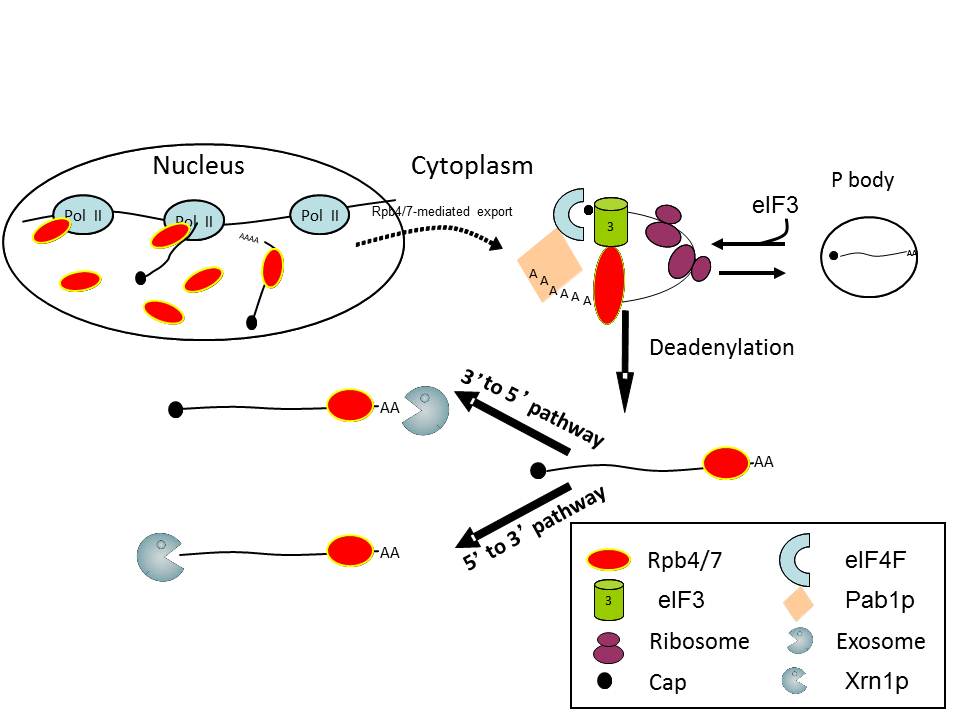mRNA coordinators:
Factors that integrate all stages of the mRNA life into a system.
The concept of mRNA coordinators (MCs) has been evolving in our lab over the last 5 years and was first published in Harel-Sharvit et al., 2010. The way we currently view MCs, is that they are likely to conform to some, if not all, of the following rules:
- The MCs play roles in all the major stages of the mRNA life cycle and are capable of regulating each stage.
- The activity of MCs in a given stage is dependent on their capacity to regulate other stages. For example, MCs need to be recruited to the transcription apparatus (and thus regulate it) in order to function in translation or mRNA decay, and vice versa.
- The roles of the MCs are likely to be critical when cells have to adapt their gene expression to a new environment. MCs may be important in properly obtaining a new steady state.
- MCs are likely to be targets of signaling systems; by targeting the MCs, these systems can control the entire mRNA life cycle.
Major challenges for future work: As depicted in the figure, Rpb4/7 is the MC prototype. We suspect that the Rpb4/7-containing MC contains other components that we wish to identify. (A) Detailed mechanistic understanding of the function of each component remains to be determined. (B) We found an additional MC candidate, which binds Rpb4, that is specific to a specific family of genes. The capacity of this MC to function is dependent on Rpb4. We now ask whether Rpb4/7 serves as a platform on which other class-specific MCs are assembled. (C) Additional challenge is to determine whether the progression of the Rpb4/7-containing mRNA from one stage to the other is dependent on the successful execution of the stage. According to this view, if the execution occurs improperly, Rpb4/7 is capable of sending the mRNA for degradation. Thus, the MC function might serve also as a quality control mechanism.
Figure: Rpb4/7 is the prototype of mRNA coordinators. The involvement of Rpb4/7 in transcription (Choder, 2004), mRNA export (Farago et al., 2003), translation (Harel-Sharvit et al., 2010) and the two major mRNA decay pathways (Goler-Baron et al., 2008; Lotan et al., 2005, 2007) suggest that Rpb4/7 coordinates the various stages of gene expression. As depicted in the model, following transcription, Rpb4/7 remains associated with the transcript throughout its life.
Rpb4/7 is capable of switching interacting partners, e.g., Pol II, Rna14p, Fcp1, components of the Pat1/Lsm1-7 complex and components of eIF3, thus exerting its impact on the different processes temporarily.
Taken from: Goler Baron et al., 2008; and Harel-Sharvit et al.
The mRNA coordination idea was first discussed in our paper Harel-Sharvit et al. See the section “Rpb4/7 Coordinates the mRNA Lifecycle” in the Discussion of this paper.
See commentaries in Cell and in Nat. Rev.
Reviewed in Choder, 2011, Dahan and Choder, 2013, Haimovich et al., 2013, and Perez-Ortin et al., 2013.



